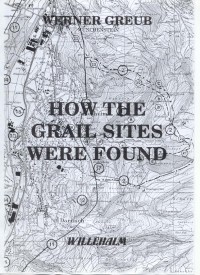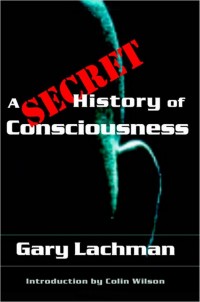Parzival Reconsidered: How the Grail Sites Were Found – Wolfram Von Eschenbach as a Historian
Werner Greub (Author),
Robert J. Kelder – Willehalm Institute Press – Amsterdam (Translator) Buy This Book!
The 13th century German poet-knight Wolfram von Eschenbach assures us that his famous Grail romance Parzival contains descriptions of historical events that took place eleven generations before his time, i.e. in the 9th century, exactly in the way he narrates them. The source for his material he describes as a certain “well-known master Kyot the Provençal”, thus not, as still generally is assumed, Perceval by the French poet Chrétien de Troyes that appeared some 20 years earlier. But because this enigmatic figure Kyot could, until now, not historically be identified, his existence has long been cast in doubt, and so it is widely assumed that Wolfram based Parzival on poetic justice. With respect to his Willehalm, an unfinished epic poem on the heroic exploits of the Franconian William of Orange, it is still generally believed that Wolfram’s source was the semi-historical folklore of the Aliscans, one of the many so-called Chansons de geste of the roving troubadours of the south of France. At that time the troubadours were extolling the rather fantastic and pious deeds of this paladin of Emperor Charlemagne. One of the last protectors of Celtic or Grail Christianity, the paladin was declared in 1066 a patron saint of the knights by Pope Alexander II.
In one of his lectures on Christ and the Spiritual World: The Search for the Holy Grail , the Austrian-born founder of the science of the Grail, also known as Anthroposophy, Rudolf Steiner (1861-1925), stated on January 1, 1914, that Kyot is no mere figment of a poet’s vivid imagination, but definitely a historical figure, who lived not in the 12th, as is still generally believed, but in the 9th century. In private conversations, moreover, he described the Arlesheim Hermitage – an old Celtic sacred landscape near the site of the Goetheanum in Dornach, Switzerland – as the actual Grail area where Parzival had his eventful meetings with Trevrizent and Sigune, both of whom lived in seclusion as hermits not far from Wolfram’s Grail Castle Munsalvaesche, often mistakenly thought to be Montségur on the French side of the Pyrenees.
The above indications by Wolfram von Eschenbach and Rudolf Steiner motivated the Swiss-born anthroposophist and Grail researcher Werner Greub (1909-1997) to take Wolfram von Eschenbach’s words seriously, thereby succeeding, as it were, in bringing the Grail down to earth. Carefully following all of Wolfram’s manifold indications from the original Middle High German texts to the letter, and reading the landscape as a largely unspoiled script, he not only found Kyot to be none other than the medieval William of Orange, but also discovered, or rather decoded, most of the historic scenes of actions where – in the first half of the ninth century – most of the actual events in Parzival as well as Willehalm must have taken place in an area of what now is now called Alsace, Switzerland, Germany and France. This led Werner Greub to formulate his novel and controversial theory that Wolfram von Eschenbach is not only to be regarded as a great poet, but also as an exact chronicler of Parzival’s revolutionary inauguration as Grail king at Whitsun Saturday, May 12, 848 in the Grail castle Munsalvaesche located halfway up a hill on an ancient Roman quarry in the Arlesheim Hermitage. Wolfram’s references to various planetary constellations also turned out to be so exact that by means of extensive astronomical calculations the whole chronology of Parzival and, indirectly, that of Willehalm could be established.
As the title of this voluminous research report suggests, the emphasis lies not so much on the where but on the how. Werner Greub managed to depict his discovery of the Grail sites on various maps and in the geographical reality itself in such a manner that every scene of action can be represented and experienced step by step within the mind of the attentive reader. The reader is invited to make the next step of visiting the Parzival and Wilhelm geography in person in order to make an experiential assessment on the merits of this unique book that purports to be the hitherto considered legendary Grail tradition in a completely new light.
How The Grail Sites Were Found was first published under the title Wolfram von Eschenbach und die Wirklichkeit des Grals in 1974 by the Goetheanum, School for Spiritual Science founded by Rudolf Steiner in 1923 as the research and development center of the General Anthroposophical Society. It elicited such controversy that the second and third volumes of this projected Grail trilogy were never officially published. Due to these and other extenuating circumstances, it took 27 years for this book to be translated and first published as a ring-bound manuscript in English in 2001 and another 12 years before this first book edition could finally see the light of day. (A French edition was published as La Quête du Gral in 2002 and a Dutch translation Willem van Oranje, Parzival en de Graal by the Willehalm Institute Press in 2009.) More »




